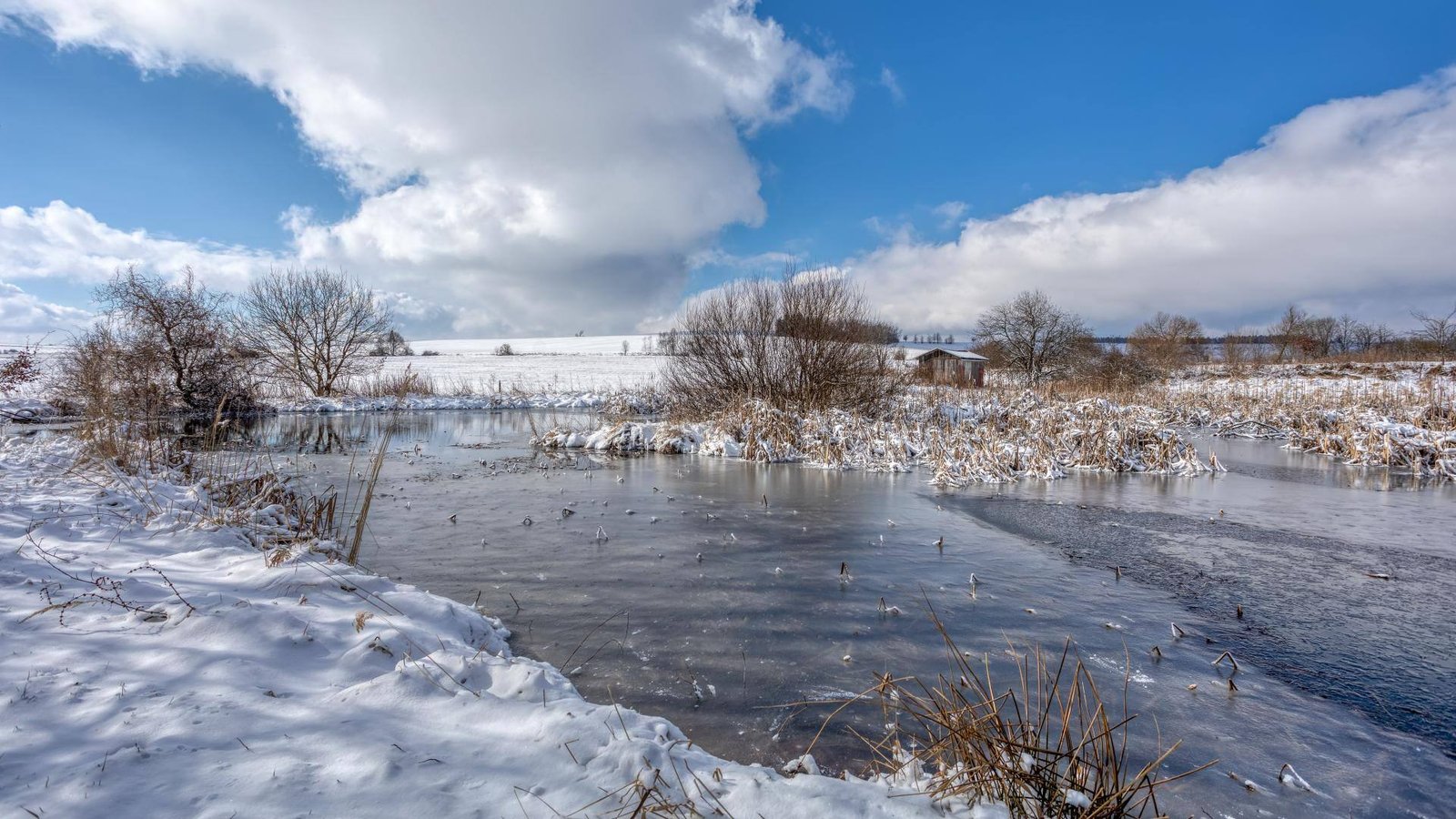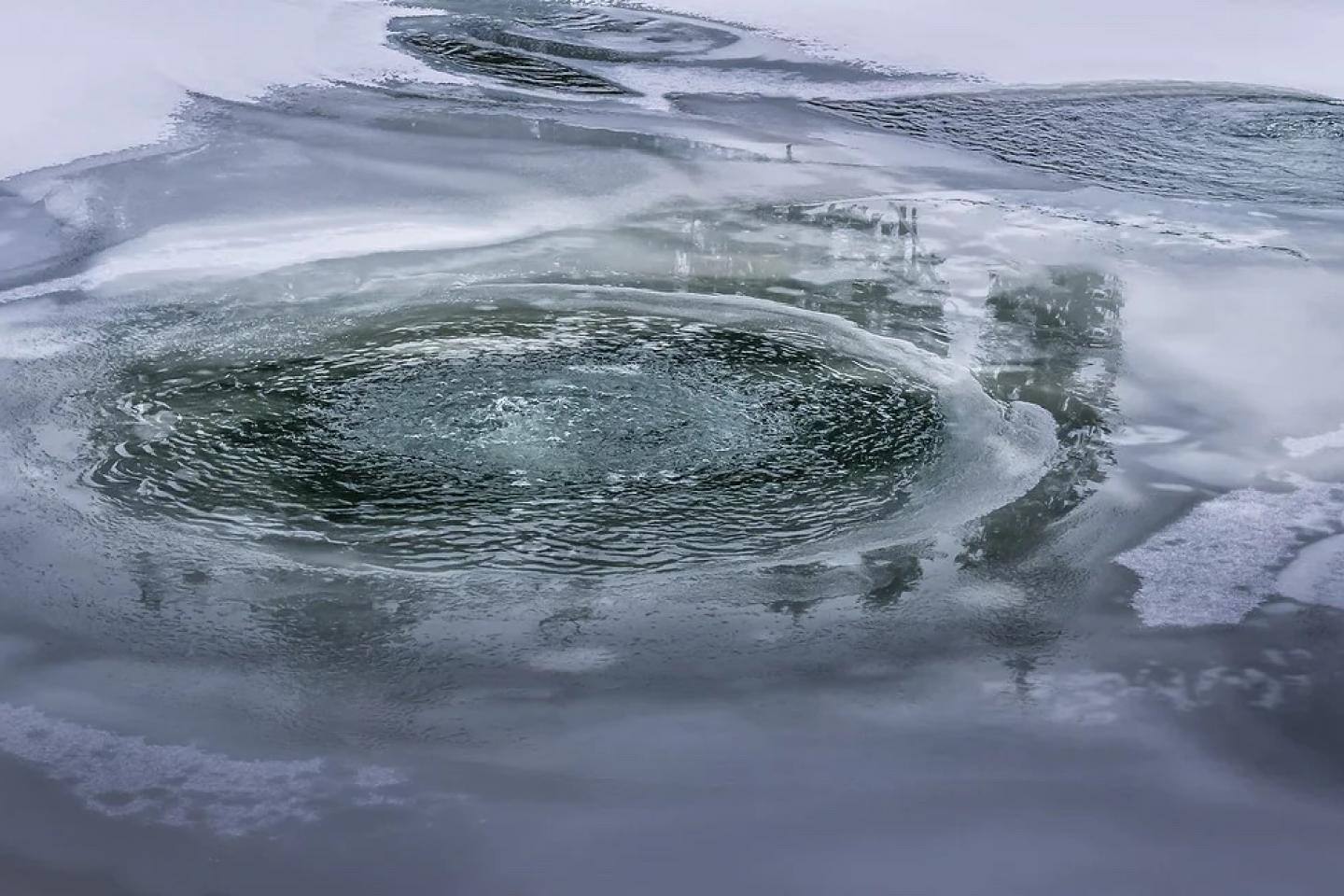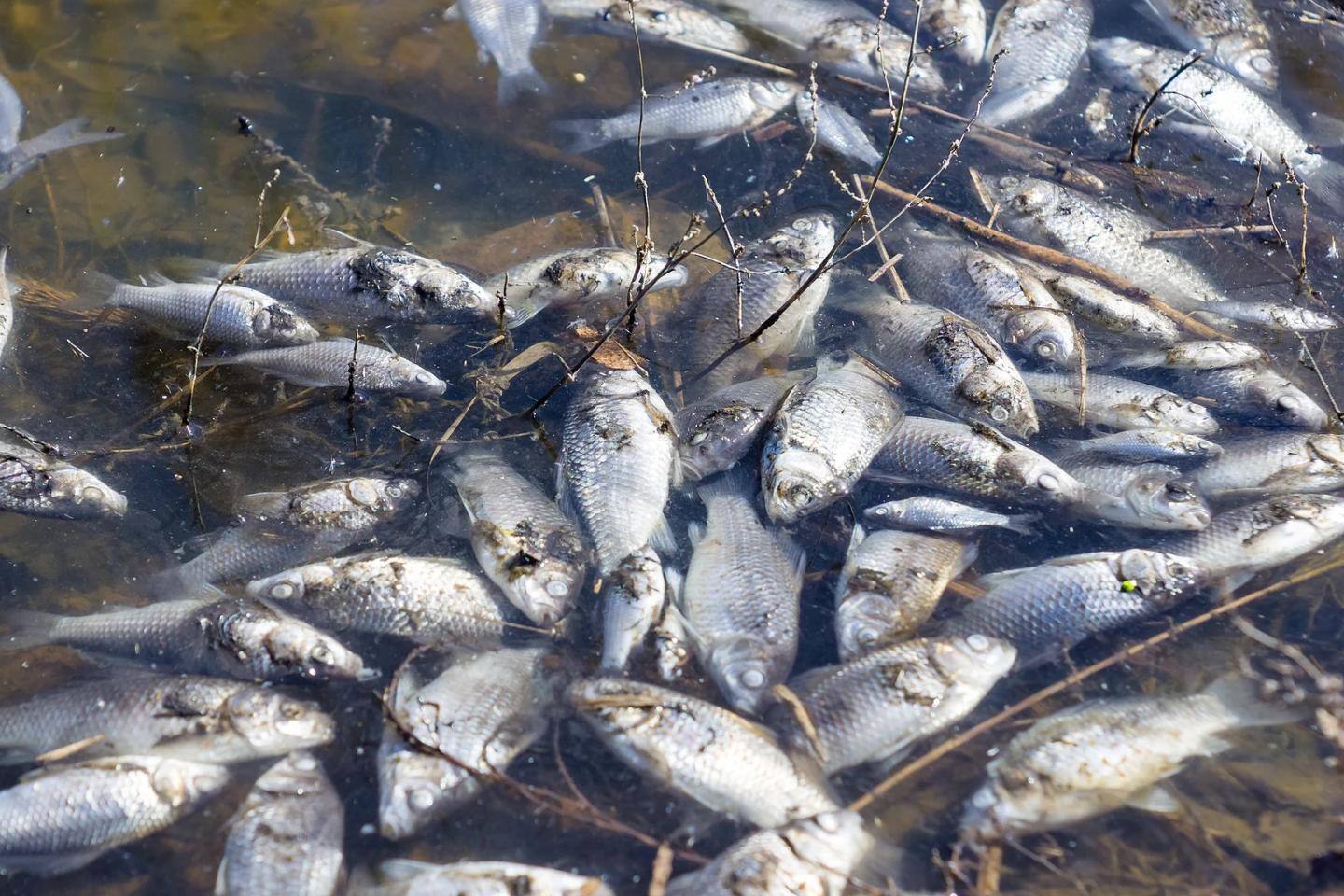Request a Free Estimate
We don't just manage your pond or lake; we transform it into a beautiful, thriving ecosystem. It's what we love to do.

During the winter months, open water and circulation from winter winds promote relatively high and stable oxygen levels. Oxygen dissolves more readily in cold water. It is worth noting the pond simply requires less oxygen in the winter, because metabolic activity of fish, bacteria and aquatic plants is reduced in cold water.
Unfortunately, when ice forms on the pond surface, neither wind nor the atmosphere can provide oxygen to the pond. If the ice is thin and clear, phytoplankton and algae can continue to photosynthesize and supply oxygen to the pond to help compensate for the ongoing demand of oxygen. However, photosynthesis is diminished with thick layers of opaque ice and snow. As a result, oxygen levels in the pond decrease slowly, but steadily, as the demand for oxygen exceeds what is being produced. Dissolved oxygen can reach critically low levels in late winter after several weeks of thick ice and snow coverage.


Shallow ponds are more likely to be affected by winter kill, because they have less water volume, but many factors play a role in the likelihood of an oxygen related winter fish kill including winter severity, fish biomass and the amount of decaying organic material in the pond. Leaves, dead aquatic weeds, uneaten fish food, and fish waste all contribute to the layer of accumulated organic material on the pond bottom. Hydrogen sulfide, methane, ammonia, carbon dioxide and other swamp gases are produced by anaerobic bacteria that thrive on the pond bottom and consume decaying organic material in the absence of oxygen. The buildup of these swamp gases can be poisonous to fish.
How to Mitigate Winter-kill
Maintaining a small area of open water facilitates oxygen transfer at the pond surface and reduces the likelihood of winter fish kills. A diffused aeration system circulates warmer water from the pond bottom to the surface to keep a portion of the pond open. This circulation vents off swamp gases and introduces oxygen to the pond bottom. In northern climates, diffused aeration systems should be run intermittently in the winter when ice is forming. Alternatively, the diffusers can be moved into shallow water if you wish to run the system continuously throughout the winter.
Not sure which aeration system is best for your lake or pond? Contact us for a free estimate.
About Jones Lake Management
Since 1949, Jones Lake Management has been a trusted leader in lake and pond management, delivering scientifically backed solutions to create and maintain healthy, balanced, and beautiful waterbodies. Our expert team offers a full range of services, including fish stocking, fisheries management, water quality monitoring, algae and aquatic weed control, aeration solutions, erosion control, invasive species management, hydraulic dredging, and more. Whether you manage a private lake, an HOA stormwater pond, a golf course water feature, or a municipal waterway, we provide customized solutions to ensure your waterbody remains healthy, functional, and thriving.
Discover our trusted lake and pond management partners nationwide—bringing expertise and care to communities across the country. From Aqua Services in the Southeast, to Water and Wetland in New England, Savin Lake Services in Michigan, Wisconsin Lake and Pond Resource in Wisconsin, and Clear Water in Texas, each partner delivers premier service tailored to their region.

We don't just manage your pond or lake; we transform it into a beautiful, thriving ecosystem. It's what we love to do.